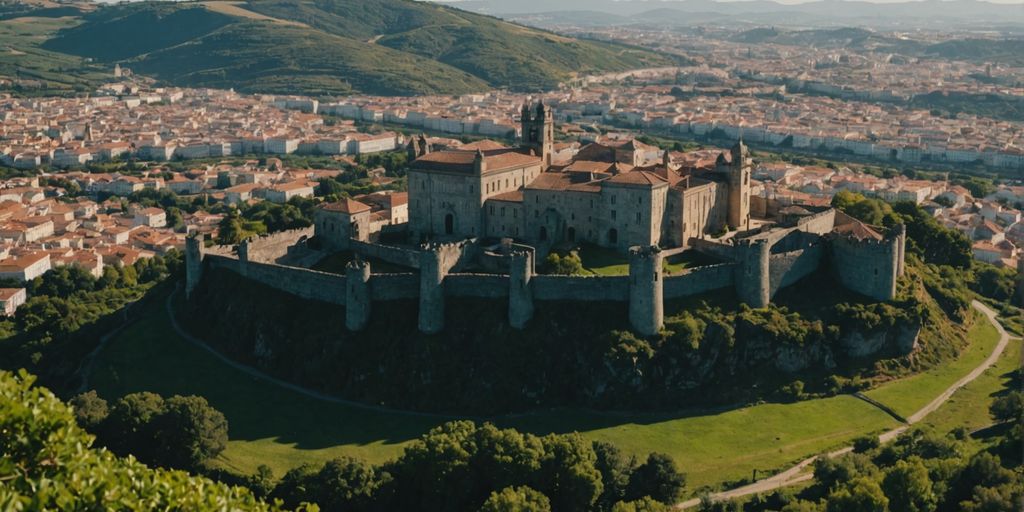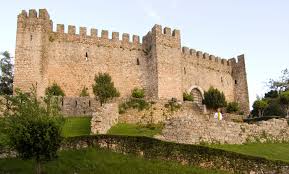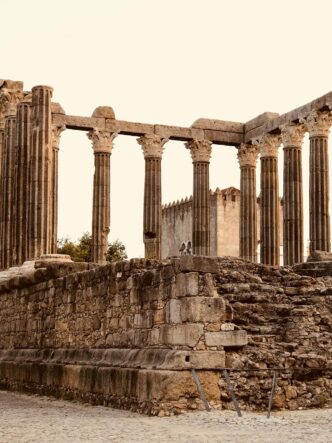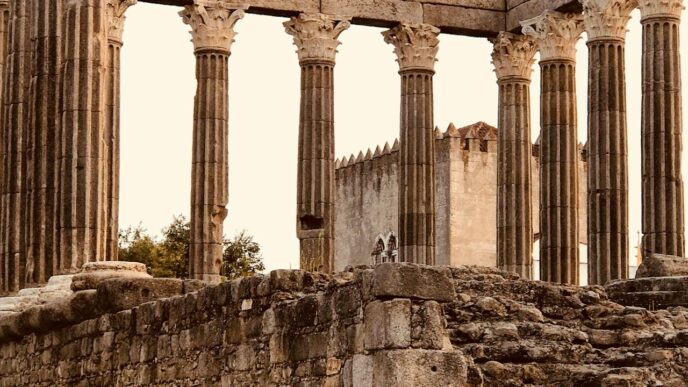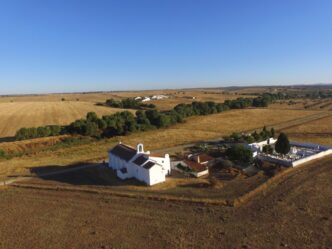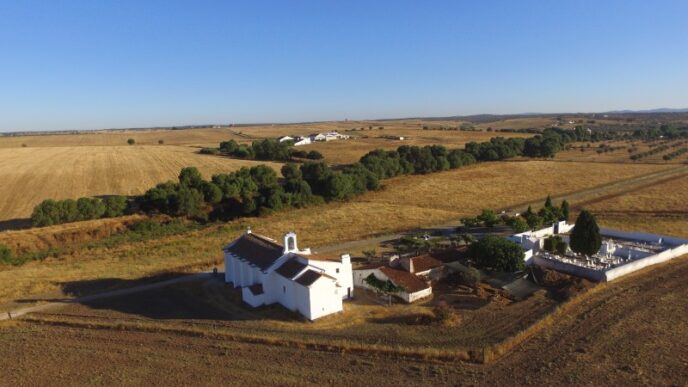Wandering Through Lisbon’s Historic Landmarks
Lisbon, the heart of Portugal, is a city that blends the old with the new. Let’s explore the best of its historic landmarks, each telling a unique story.
The Charm of Alfama
Alfama is Lisbon’s oldest district. Its narrow streets and alleys are perfect for wandering. You can find traditional Fado music here, echoing through the night.
Exploring Belém Tower
Belém Tower is a symbol of Portugal’s Age of Discovery. This fortress once guarded the entrance to the city. Today, it’s a UNESCO World Heritage site.
The Majesty of São Jorge Castle
São Jorge Castle sits atop one of Lisbon’s seven hills. The views from here are breathtaking. You can see the entire city and the Tagus River.
Exploring these landmarks not only offers a glimpse into Portugal’s past but also provides an immersive and captivating journey through time. So, whether you’re wandering through Sintra’s magical palaces, tracing the history of Lisbon’s landmarks, or discovering the medieval charm of Évora and Guimarães, each step unveils a piece of Portugal’s illustrious history waiting to be discovered.
Sintra’s Fairy-Tale Palaces
Get ready to be enchanted as we explore Sintra, a town that feels like it’s straight out of a storybook. Nestled in lush forests, Sintra is home to some of the most magical palaces you’ll ever see.
The Medieval Charm of Évora
Discovering Évora: a UNESCO World Heritage Site in Portugal’s Alentejo region, offering Roman history, charming streets, and delicious cuisine. Easy access from Lisbon, with must-see landmarks and cozy accommodations. Perfect for a cultural escape.
Guimarães: The Birthplace of Portugal
Guimarães is often called the cradle city of Portugal. This medieval town is where the first King of Portugal, Afonso Henriques, was born. The city is a UNESCO site and offers a rich historical experience.
Porto: A Blend of Tradition and Modernity
Porto is a city that proudly embraces its heritage while moving forward into the future. Let’s explore some of its most captivating spots.
Ribeira District’s Allure
The Ribeira District is a must-see. Wander through its cobblestoned streets and discover hidden alleyways. The charm of this area is undeniable.
Lello Bookstore’s Magic
Lello Bookstore is like stepping into a fairy tale. Its stunning architecture and rich history make it a magical place to visit.
Port Wine Cellars Tour
No trip to Porto is complete without a tour of the Port Wine Cellars. Learn about the history of Port wine and enjoy a tasting session. It’s a delightful experience.
Discovering the Wonders of Óbidos
Óbidos is a charming village that feels like stepping back in time. The cobblestone streets and whitewashed houses are simply enchanting. Let’s dive into some of the must-see spots in this historic town.
Batalha Monastery: A Gothic Masterpiece
Adjacent to Alcobaça lies the Batalha Monastery, a Gothic masterpiece that took centuries to complete. Its intricate façade and breathtaking interiors are a testament to the country’s dedication to religious art and architecture.
Alcobaça Monastery: A Testament to Love
Journey to Alcobaça and witness the grandeur of the Alcobaça Monastery, a UNESCO World Heritage site. This medieval monastery, with its imposing architecture and serene cloisters, houses the tombs of King Pedro I and Inês de Castro, whose tragic love story is woven into Portugal’s history.
Exploring the Douro Valley
The Douro Valley is a must-see for wine lovers. Just a short trip from Porto, this region offers a unique blend of natural beauty and cultural richness. Explore Douro’s top attractions, from ancient historic wonders to vibrant cultural sightseeing.
The Coastal Beauty of Cascais
Cascais is a coastal gem just 30 minutes from Lisbon. It’s the perfect spot for a quick getaway. The balance of life here is absolutely incredible. You can enjoy the beach, explore historic sites, and savor delicious food all in one day.
Boca do Inferno
Boca do Inferno, or Hell’s Mouth, is a dramatic cliff formation. The waves crashing against the rocks create a spectacular show. It’s a must-see for any visitor.
Cascais Citadel
The Cascais Citadel is a historic fortress. It offers stunning views of the sea. Wander through its ancient walls and imagine the history that unfolded here.
Guincho Beach
Guincho Beach is a paradise for surfers. The strong winds and waves make it a top spot for water sports. Even if you’re not into surfing, the beach is perfect for a relaxing day by the sea.
The Rich Heritage of Coimbra
Coimbra is a city steeped in history, with the University of Coimbra, one of the oldest in the world. The narrow streets and preserved monuments tell stories of the past. Let’s dive into some of the highlights of this historic city.
Frequently Asked Questions
What are the must-visit historical landmarks in Lisbon?
In Lisbon, you should definitely visit Alfama, Belém Tower, and São Jorge Castle. Each place offers a unique glimpse into the city’s rich history.
What makes Sintra’s palaces special?
Sintra’s palaces, like Pena Palace, Quinta da Regaleira, and Monserrate Palace, are known for their fairy-tale architecture and enchanting gardens.
Why is Évora considered a medieval gem?
Évora is famous for its well-preserved medieval structures, including the Roman Temple, Évora Cathedral, and the eerie Bone Chapel.
What historical sites can I visit in Guimarães?
Guimarães is home to the Castle of Guimarães, the Palace of the Dukes of Braganza, and a charming historic center, all of which highlight its role as the birthplace of Portugal.
What unique experiences does Porto offer?
In Porto, you can explore the Ribeira District, visit the magical Lello Bookstore, and tour the famous Port wine cellars.
What can I expect when visiting Óbidos?
Óbidos is a picturesque village featuring a well-preserved castle, charming streets, and the unique Literary Man Hotel.
What are the highlights of Batalha Monastery?
Batalha Monastery is renowned for its Gothic architecture, the Founder’s Chapel, and the intriguing Unfinished Chapels.
Why is Alcobaça Monastery significant?
Alcobaça Monastery is famous for the tombs of Pedro and Inês, its grand architecture, and the historic Monastic Kitchen.

